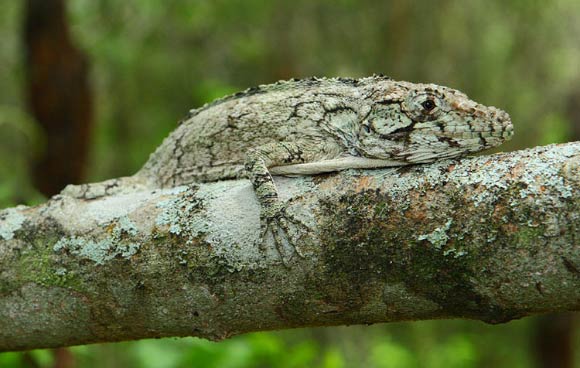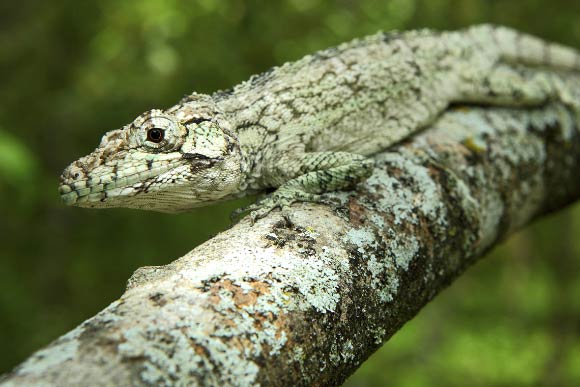Scientists from Canada and the United States have discovered a new species of Greater Antillean anole lizard in the Dominican Republic, on the Caribbean island of Hispaniola, strengthening a theory that communities of lizards can evolve almost identically on separate islands.
Greater Antillean anoles (genus Anolis) are a textbook example of a phenomenon known as replicated adaptive radiation, where related species evolving on different islands diversify into similar sets of species that occupy the same ecological niches.
Examples of this could be long-tailed grass dwellers, bright green canopy lizards, and stocky brown species that perch low on tree trunks, each living in similar environments on more than one island.
Although most Greater Antillean anoles may have a matching counterpart on another island, scientists have long known that a sizeable fraction do not – roughly one fifth of the region’s anole species are ‘exceptions to the rule’ so far.
Most noticeable among these unique lizards are Cuban anoles from the Chamaeleolis group.
Chamaeleolis anoles look less like typical anoles and more like chameleons: large, cryptic, slow-moving, and prone to clinging to lichen-covered branches high in forest canopies.
Scientists believed there was nothing like these Cuban lizards on the other Greater Antillean islands.
The new species, named Anolis landestoyi, was found in the Dominican Republic but bears a strong resemblance to Cuba’s Chamaeleolis anoles.
The discovery suggests that there may be fewer exceptions to this island evolution rule than the science community previously appreciated.
“Like the discovery of a missing puzzle piece, Anolis landestoyi clarifies our view of replicated adaptive radiation in anoles,” said Dr. Luke Mahler from the University of Toronto, lead author of an article on the discovery published online in the journal American Naturalist on June 17.
“The discovery adds new support for the idea that the buildup of ecological communities on islands can be surprisingly predictable.”
According to the team, Anolis landestoyi is at risk because it’s restricted to a unique habitat only found in a small area in the western Dominican Republic that is rapidly disappearing due to illegal deforestation.
Next for the scientists is to figure out if the newfound species evolved on the island to be strikingly similar to Cuba’s Chamaeleolis anoles or if the similarity is due to shared ancestry. Anolis landestoyi and Chamaeleolis are close relatives, but are not next of kin.
“We don’t know if it’s convergence or the fact that it’s pretty closely related to Chamaeleolis, which may have colonized Hispaniola from Cuba. But either way, things are more similar across these two islands than we thought,” Dr. Mahler said.
_____
D. Luke Mahler et al. Discovery of a Giant Chameleon-Like Lizard (Anolis) on Hispaniola and Its Significance to Understanding Replicated Adaptive Radiations. American Naturalist, published online June 17, 2016; doi: 10.1086/687566









